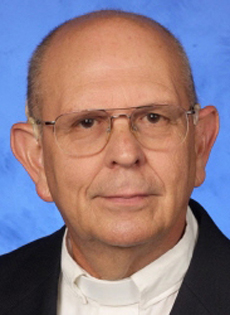
2015: Year of Consecrated Life
Monday, February 2, 2015
Fr. Eduardo Barrios, SJ
Since Nov. 21, 2014, the Catholic Church has been celebrating the Year of Consecrated Life.
The example and the words of Jesus caused a mighty impact on his followers. They noted that he lived focused on love for the Father and the mission he received: “The world must know that I love the Father and that I do just as the Father has commanded me” (Jn. 14:31). He even said, “My food is to do the will of the one who sent me” (Jn. 4:34a). He addressed the Father with the familiar word “Abba” (Mk. 14:36). He clearly expressed his special relationship saying, “The Father and I are one” (Jn. 10:30). His adversaries were scandalized and tried to stone him: “We are not stoning you for a good work but for blasphemy. You, a man, are making yourself God” (Jn. 10:33).
Jesus’ disciples knew that their Master had been born poor, in a manger (cf. Lk. 2:7). They saw that he lived in poverty, having “nowhere to rest his head” (Lk. 9:58), and that he died poor, stripped of his vestments (cf. Jn. 19:23). His life could also be summarized as a prolonged act of obedience to the Father: “obedient to death, even death on a cross” (Phil. 2:8). And he never married.
Since the earliest days of the Church, there were attempts at a very radical evangelical life: “All who believed were together and had all things in common” (Acts 2:44). The first centuries were arduous because of the persecution from the Jews and the gentiles. With the Constantine peace in the fourth century, martyrdom stops being the privileged way to holiness, and a new kind of Christian radicalism flourishes. Both clergy and laity began marching towards the desert to dedicate themselves with more freedom to study, prayer, penitence and, eventually, pastoral service. Some lived in solitude, in ascetic life. Most of them established communities, monastic life. Since then, monasteries would flourish. Those centers of intellectual and spiritual formation gave the Church more than a few bishops. Monasteries for women also multiplied.
That is how religious life came to be a very appropriate expression of the nature of the Church, that is one, holy, Catholic and apostolic. When the Second Vatican Council included religious men and women in the Dogmatic Constitution on the Church, it showed that they belong to its structure. They are considered a divine gift that the Church receives and keeps in perpetuity (cf. LG 43).
To embrace such a way of life, there is a need to experience God “loved beyond all things” (LG 44). Those who consecrate themselves to Him do so not because they necessarily like the vows of poverty, chastity and obedience, but because they feel captivated by the love of God. The vows are only the concrete expression of their total dedication to the One who fulfills the human heart.
Since the day of Pentecost, the Holy Spirit enriches the new people of God with its inspirations and charisms. Under its breath, many institutes have emerged with their own spiritual features. Even though the evangelical counsels of poverty, chastity and obedience are characteristic of all religious, there is a variety in terms of the emphasis and priorities of their ministries. Diversity gives origin to different spiritualities. Much depends on aspect of the life of Jesus that the Holy Spirit etched in the heart of their founders. That way, some prolong the love of Jesus for the sick, others for the children, others for the elderly and the orphans, and so forth.
Today, there are many religious families with roots in the charisms of wonderful male and female saints. Without being exhaustive, we remember founders as ancestral as St. Basil, St. Augustine, St. Francis, St. Dominic, St. Brigid, St. Teresa of Avila, St. Ignatius of Loyola, St. Joseph of Calasanz, and so many others. Of those ancient foundations, some remain strong, while others have weakened. But new institutes flourish every year.
On Feb. 2, 2014, the Congregation for Institutes of Consecrated Life and Societies of Apostolic Life addressed a letter to men and women religious encouraging the spiritual and apostolic renewal of those who profess that way of life. The current Bishop of Rome, Pope Francis, who comes from consecrated life himself, has called upon them to fight against “the image of religious life understood as an escape and consolation in face of an ‘external’ difficult and complex world.” The Pontiff asked them to “leave the nest” in order to be sent to the men and women of our times.


Comments from readers